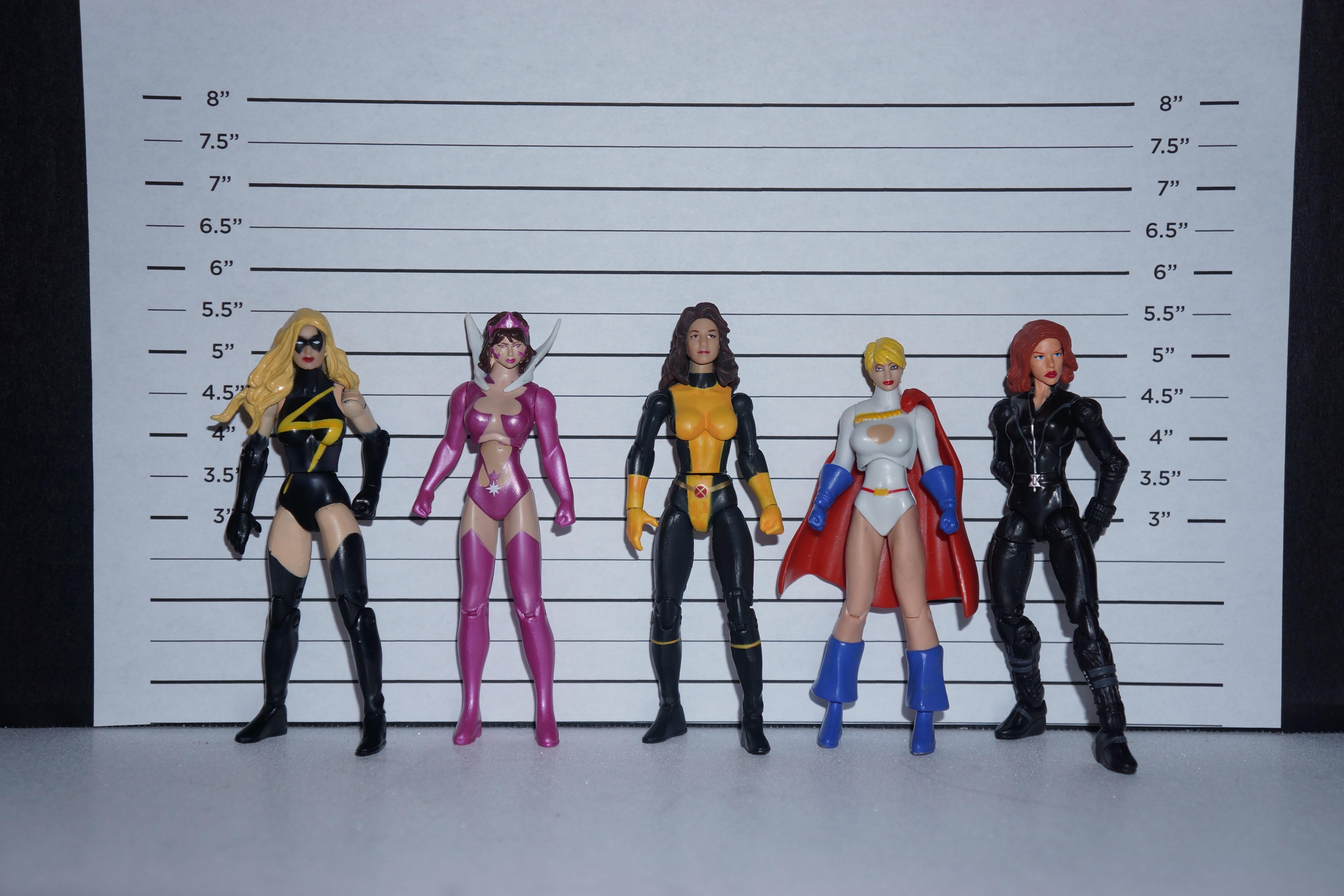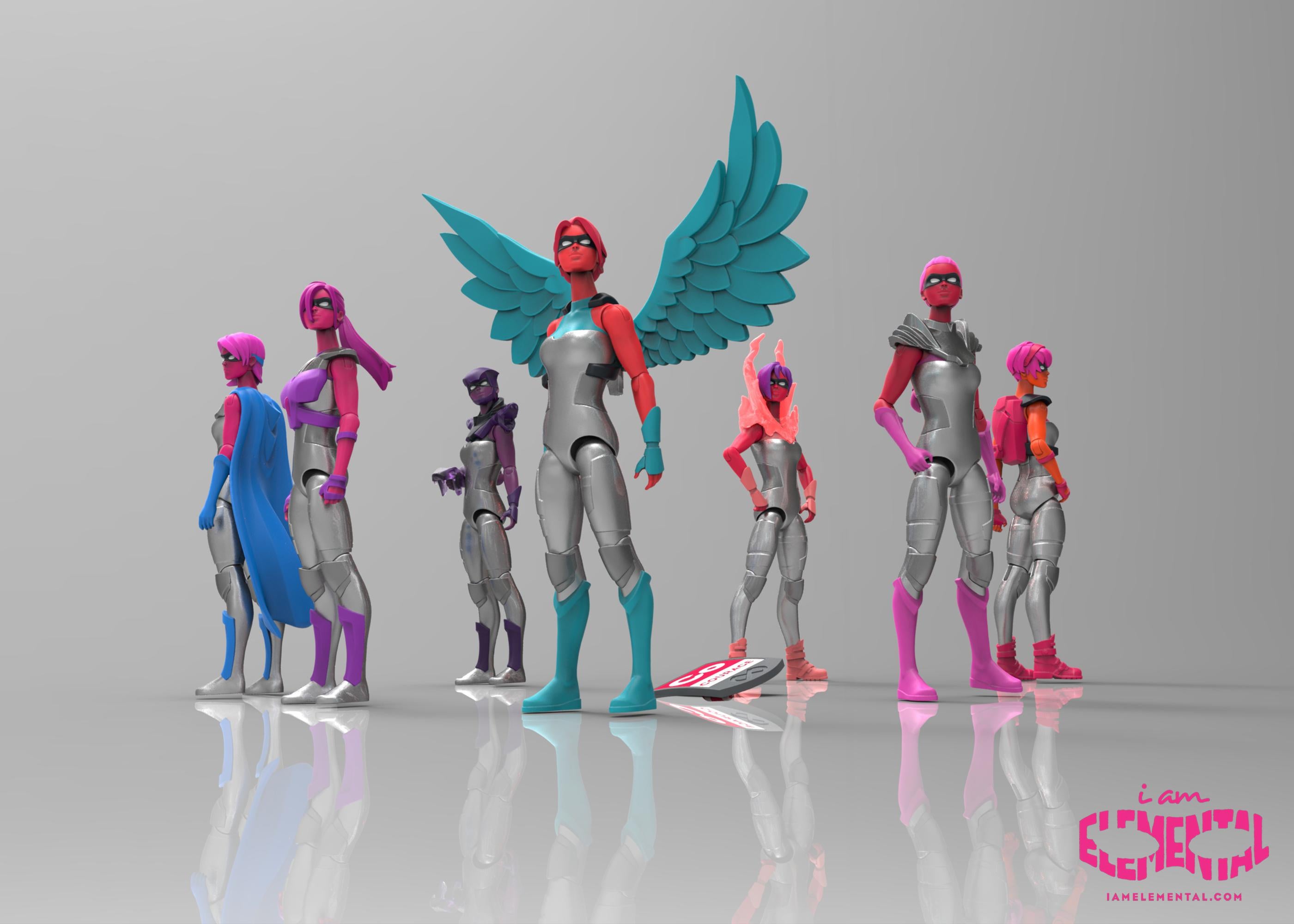In March, the academic journal Sex Roles published a study suggesting that young girls who played with Barbie dolls ended the play session thinking that when they grow up, they won’t be as capable of doing the same jobs that boys can do—even if their Barbie was dressed like a doctor. Girls who played with a formless Mrs. Potato Head figure, on the other hand, were much less likely to count themselves out. Now, New York City moms Dawn Nadeau and Julie Kerwin are teaming up to offer boys and girls a play alternative that looks like a woman but not an object. Last month, they launched their own action figure company, IAmElemental, and have since raised over $160,000 on Kickstarter to jump-start a line of female action figures inspired by everyday “superpowers” like bravery, honesty, persistence, and fear. I talked with Nadeau (who has two girls, ages 6 and 8) and Kerwin (two boys, 8 and 16) about taking on Mattel, how to get boys to pick up female action figures, and the challenges of molding a plastic butt.
Slate: What’s the IAmElemental origin story?
Julie Kerwin: Dawn and I kept having these conversations about action figures and superheroes, wondering why Spiderman manages to appeal to a 4-year-old boy as much as it does to a 40-year-old man, but women and girls don’t have anything remotely like him. The action figures for girls created today by Hasbro and Mattel are created for the collector community, and they’re hypersexualized in a way that is not appropriate for young girls. I joke that the idea was like Athena being born out of my head: One day it just hit me that we should start our own company where the girl plays the superhero, and her action figures are the personification of her powers.
Slate: Have you two noticed a difference in the types of toys your boys and girls are drawn to?
Kerwin: Yes and no. Once we started developing the idea, my 8-year-old said to me, “You know, mom, this is a great thing, because when [Nadeau’s daughter] Julia comes to play with me, I don’t have any girl gladiators for her to play with.” My 16-year-old was a little more dismissive, and he said, “Well, there were no female gladiators, so that’s why they don’t have any.” I rose to my 16-year-old’s challenge, and I found historical female gladiators. There actually were gladiatrices who were women. What fascinates me is that when my son goes over to Dawn’s house to play, invariably, they act as the princesses and he plays the knight. But when they come to our house to play, they all use the swords and the shields and the wands. It’s a very different type of play.
Dawn Nadeau: As the mother of girls, it’s hard to find any toys where the girls themselves are the active creators, the ones saving the day. The storyline that’s implied when you have two Barbie dolls dressed as princesses is very different from the story that unfolds when you have two figures that are dressed like knights. I’ve seen it time and time again: Even if my girls ask for something like a spaceship with astronauts that go in it, I can’t find any astronauts that are girls. So I’ve tried to find a comparable toy in the same size that can play the girl astronaut, but I can’t find a 4-inch articulated action figure that will function in the same way, and that doesn’t have huge breasts and a tiny waist. We always say that if you give a kid a different toy, they’re going to tell a different story.

Photo by IAmElemental
Slate: Often I hear about a really exciting new toy on Kickstarter that gets a lot of funding and attention when it’s announced, but a few years later, nothing seems to have changed: It’s still just Barbies and Transformers on the shelves.
Kerwin: We’re not going to put Mattel or Hasbro out of business anytime soon. But the worldwide toy market is $80 billion. The American market is $20 billion. Action figures alone make $1.5 billion, and dolls make $2.5 billion. We’re just going to take a piece of it. If you look at what Hasbro and Mattel are producing, the popular wisdom has always been that girls just don’t want to play with action figures. But we weren’t [developing this idea] sitting around with people who create toys—we were hanging out with girls in play.
Slate: You’ve described other female action figures as “More Hooters than heroine,” all with impossible figures. How exactly did you decide on your figure’s measurements?
Nadeau: You kind of know it when you see it. We were looking for a figure that was female in form—it doesn’t serve anyone well if it’s not identifiably female—while being sensitive to the troubling aspects that are very common on these other figures. We spent so much time poring over the torso. We focused on the breasts not being overly emphasized. We tinkered with the breast-to-hip ratio, and how all the pieces fit together, to make sure the legs didn’t splay out in a hypersexualized way. And honestly, the ass crack was a big issue.
Kerwin: You gotta look at the bum. Everyone talks about the breasts! And trust me, we found some figures where their heads are actually smaller than their breasts.
Nadeau: We measured.
Kerwin: But I had this bizarre obsession with the bum. Our figure designers—who have been amazing, and really got it from the very beginning—kept sending us these drawings with this bum where the crack was just too big. It was too sexual.
Nadeau: We were like, “Bridge the gap! Bridge the gap!”
Kerwin: It took them months before they actually listened to me. It sounds silly, but it really affected the way you saw the figure.
Slate: You’ve talked about how important it is to get more realistic female action figures into the hands of both girls and boys. Do you think it will be more of a challenge to get boys on board?
Kerwin: It’s hard to say right now, because the responses of my children, and the boys in our sphere, have all been overwhelmingly positive. And our kids have been living with this stuff for years. The other day, our 8-year-old came to me with his Princess Leia figure, and he said, “Mom, look! She has a much healthier breast-to-hip ratio than the other figures do.” But we’re confident that 4-to-8-year-old boys haven’t internalized all of those gendered cultural messages yet, and we made our action figures so fierce and fun and cool-looking that they would appeal to anyone.
Nadeau: Part of the way kids respond to toys is how they’re presented by their caregivers. We think if parents just say, “This is really cool, do you want to play with it?” the toys will stand on their own.
This interview has been condensed and edited.
